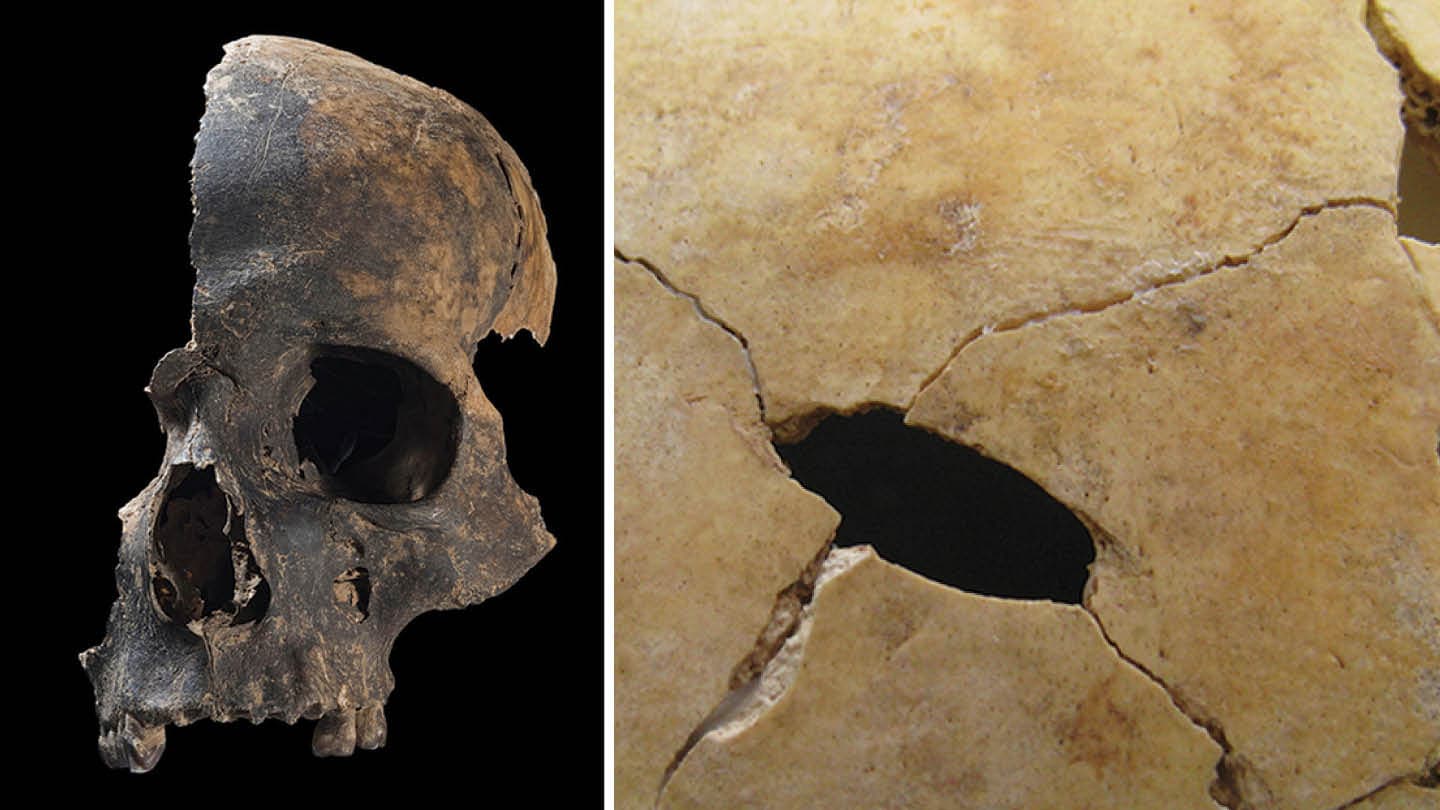Britain

Bones of at least 37 Bronze Age victims found in a shaft had tool incisions and human gnaw marks

Marks on nearly half of the 20 skulls pulled from a British mass grave holding the remains of at least 37 people bear marks of lethal blows to the head.
R.J. Schulting et al/Antiquity 2024
A 4,000-year-old murder mystery began with a massacre in what’s now southwestern England. Then came dismemberment, possibly accompanied by cannibalism.
At least 37 men, women and children suffered this violent fate, ending up dumped into a 15-meter-deep natural shaft by unknown attackers, say archaeologist Rick Schulting of the University of Oxford and colleagues. The perpetrators also threw butchered parts of cattle and other domestic and wild animals into the shaft, the researchers report December 16 in Antiquity.
Motives for the gruesome Early Bronze Age event remain murky. No weapons or any other possible clues to attackers’ identity have turned up.
In Britain, the Early Bronze Age ran from about 2200 B.C. to 1500 B.C. “There has been no [previous] indication of violence on this scale in Britain at that time, both regarding the number of victims and the way in which they were treated after death,” Schulting says.
Researchers have discovered a few other ancient human massacre sites in continental Europe, ranging in age from around 1,500 years old, following the Bronze Age, to roughly 7,000 years old, preceding the Bronze Age (SN: 10/6/20; SN: 12/3/09).
Schulting’s team analyzed more than 3,000 human bones and bone fragments excavated in the 1970s and 1980s at a British site called Charterhouse Warren. Radiocarbon dates indicate that human and nonhuman remains were deposited in a single event between around 4,200 and 4,000 years ago, the scientists say.
Diet-related chemicals in the bones suggest that most victims grew up near Charterhouse Warren.
Nearly half of 20 recovered skulls displayed fatal wounds caused by being struck with weapons such as wooden clubs. Victims showed no skeletal signs of a fight, suggesting that they may have been taken as captives before the attack or killed during a surprise raid.
A cycle of escalating revenge killings between nearby communities might have created enough antagonism to trigger the ancient British massacre, Schulting speculates. Revenge killings have accounted for high homicide rates in some modern hunter-gatherer societies (SN: 7/18/13).
Signs of possible cannibalism at Charterhouse Warren consist of tool incisions on leg bones where flesh was removed, fractures at the ends of long bones linked to marrow removal and human chew marks on foot and hand bones and ribs.
Attackers at the British site partly consumed victims before depositing their remains with butchered cattle, perhaps to dehumanize their enemies, the researchers suspect.
More Stories from Science News on Anthropology
